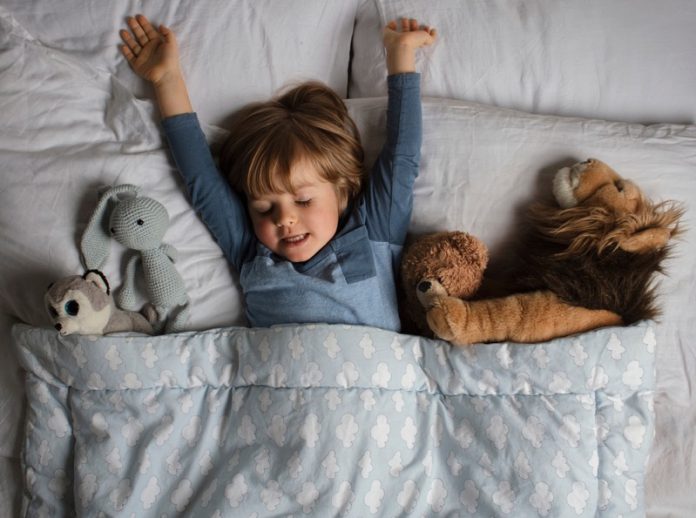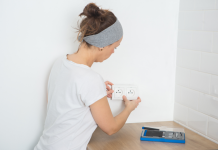Transitioning from a crib to a real bed can be difficult for your child. They may feel scared or unsure of the change and need help adjusting. But there are many things you can do — and a few mistakes you can avoid — that will make the process easier and smoother. From selecting the right bedroom essentials to maintaining a routine, we’ve got the advice you need to successfully transition your child into a real bed.
Set Your Child Up for Success
Choose the Right Bed
Select a bed that fits your child’s size and personality. Think about their age, if they like to sleep with stuffed animals and if your child needs a bed that is low to the ground for safety. Remember that comfort is key — opt for a mattress that provides enough support but is still soft and inviting. And you don’t need to get them a toddler bed, but don’t stick them in a queen-sized bed right away, either.
Transition Slowly
Don’t expect your child to adjust to their new bed overnight — it may take some time for them to get used to it. Instead, start by having them sleep in it for naps and then gradually increase the time spent in it until they sleep through the night. The more they use their bed, the more comfortable they will feel. If you follow sleep guidelines, your child will spend ten or more hours in their bed each night — so it’s worth ensuring they’re as comfortable as possible.
Use Bed Rails
If you’re concerned about your child falling out of bed, you can use bed rails to keep them safe. Bed rails are designed to fit around the perimeter of a mattress and will prevent your child from rolling off the edge. In addition, some parents choose to use bed rails on both sides, even if the bed is up against a wall. This will prevent your child from rolling to the other side and possibly getting stuck between the bed and the wall.
Put the Bed in Their Room
This may sound odd, but it’s worth mentioning if your child is used to sleeping in your room. Whether your child slept in a crib in your room or your bed, moving them into their own room can be a big adjustment. Having the bed in their room can help them adjust to sleeping alone and will also give you a better opportunity for enforcing a bedtime routine.
Let Them Pick Out Their Bedding
One way to get your child excited about transitioning to a real bed is to let them pick out their own bedding. Choosing their new bedding comforters or sheets can help make the transition more fun and exciting for them. They’ll also have something that’s theirs, making the whole process feel more special.
Make Sure the Bed Is Comfortable
This seems obvious, but it’s worth mentioning. It’s essential that your child is comfortable in their new bed so they’ll be more likely to want to sleep in it. Ensure the mattress is firm but not too hard and that the sheets are soft and cozy. You should also add blankets and bedding pillows that your child can snuggle with. And if the mattress is a hand-me-down, consider mattress pads or toppers for extra comfort.

Be Patient
It’s important to be patient with your child as they transition to a real bed since it can be a big adjustment for them. There may be some bumps along the way but, eventually, they’ll get used to sleeping in their new bed and be happy with the change.
Avoid These Common Mistakes
Not Preparing Your Child in Advance
One of the most common mistakes parents make when transitioning their child to a real bed is not preparing them in advance. It’s important to talk to your child about the change and why it’s happening. Explain that they’re getting bigger and need their own space to sleep. Let them know you’re still there for them and will always support them. Your child needs to understand this process as best they can. By working with them ahead of time, it will make things easier.
Forgetting About the Bedtime Routine
A bedtime routine is important to get your child to sleep in their new bed. Chances are there was an old routine you were doing with your child, so try to keep up with it. For example, have a bath or shower, read stories together and tuck them in before they go to bed. And if they haven’t had much of a routine before, now’s the perfect time to start one.

Failing to Be Consistent
This goes hand-in-hand with routine but extends a little further as well. It’s important to be consistent with the rules you set for your child. If they’re allowed to get out of bed at night and snuggle in your bed or climb back into their old crib if it’s still set up, it can make the transition to a real bed much harder. So ensure you’re consistent with the rules and expectations so your child knows what to expect when it comes to sleep time.
At What Age Should My Child Sleep in a Big Kid Bed?
The age at which you should transition your child to a real bed is up to you and depends on various factors. Some children might be ready at two years old, while others might need to wait until three or a little older. The important thing is to make sure your child is comfortable and prepared for the transition before making the switch.
Bottom Line
Transitioning your child from a crib to a real bed is an exciting milestone in their lives, but it can also be a stressful one for parents. Just remember to be patient with your child, prepare them in advance and keep a consistent bedtime routine. With these tips, you’ll have no trouble helping your little one transition to a big kid’s bed.




